 | | Pet Insurance - Working through the insurance maze | | | Pet Insurance can be one of the most valuable things you can do for your pet in the long term, but looking at the options and picking a policy that suits you can be a daunting task. There is a lot of insurance jargon, fine print, and conditions to read through, which makes trying to get started difficult.
When starting your insurance research, here are some things worth noting:
- Each company markets their policy differently; however, the majority of companies actually have the same underwriter and very similar PD's.
- As a rule of thumb, the sooner insurance is taken out the more likely you are to have full coverage with no exclusions on your policy due to a lack of pre-existing conditions.
- I haven't heard of an insurance policy yet that doesn't have some sort of waiting period that needs to be served before claiming, so bear this in mind before taking out insurance.
- Your pet's specific circumstances need to be considered when you are deciding what the best insurance fit is. This includes age, breed, and pre-existing conditions (ie has your pet been to the vet for allergies? Gastro-intestinal upset? Limping?
Once you have narrowed down some options, there will be some questions you need to ask yourself when considering the cover, such as:
- What is the yearly coverage allowances on the policys and will it be sufficient? (e.g. $10,000 or $15,000 per policy year)
- What are the applicable excesses, if any? How are these excesses applied? On every claim, or per condition per policy year?
- Are there any restrictions on amount of surgery type you can claim? (e.g. 1 claim per life of policy for foreign body surgery may not be sufficient if you have a chewer!)
- Are there long waiting periods for issues such as cruciate disease that your pet's breed may be prone to?
- Are there monetary limits to some claimable procedures? (are your pets surgery costs likely to exceed what the policy is willing to cover? Important to consider for some larger breed dogs)
- Is there anything that the policy will not cover, such as parvovirus treatment?
- Is there liability cover in the even that your pet causes harm to another person or pet?
- Does your pet have any pre-existing issues that may be excluded from future cover?
- Considering the breed of your pet, what are common health concerns that you would expect to be covered? Will they be covered?
- Are there breed or age restrictions that may apply to your pet?
- Does the policy allow for specialist treatment, or remedial/alternative treatment such as massage and acupuncture? Are you likely to use these services?
All of these factors differ between each insurance company (as does the cost!) so it is important to consider your potential needs and expectations of insurance prior to picking the cover that best suits you and your pet. Insurance may not be for you at all, so make preparations for unexpected events by creating a savings fund to help offset these costs.
As always, we're here to help! Talk to us today about a free 30 day offer we have available. |
|
|
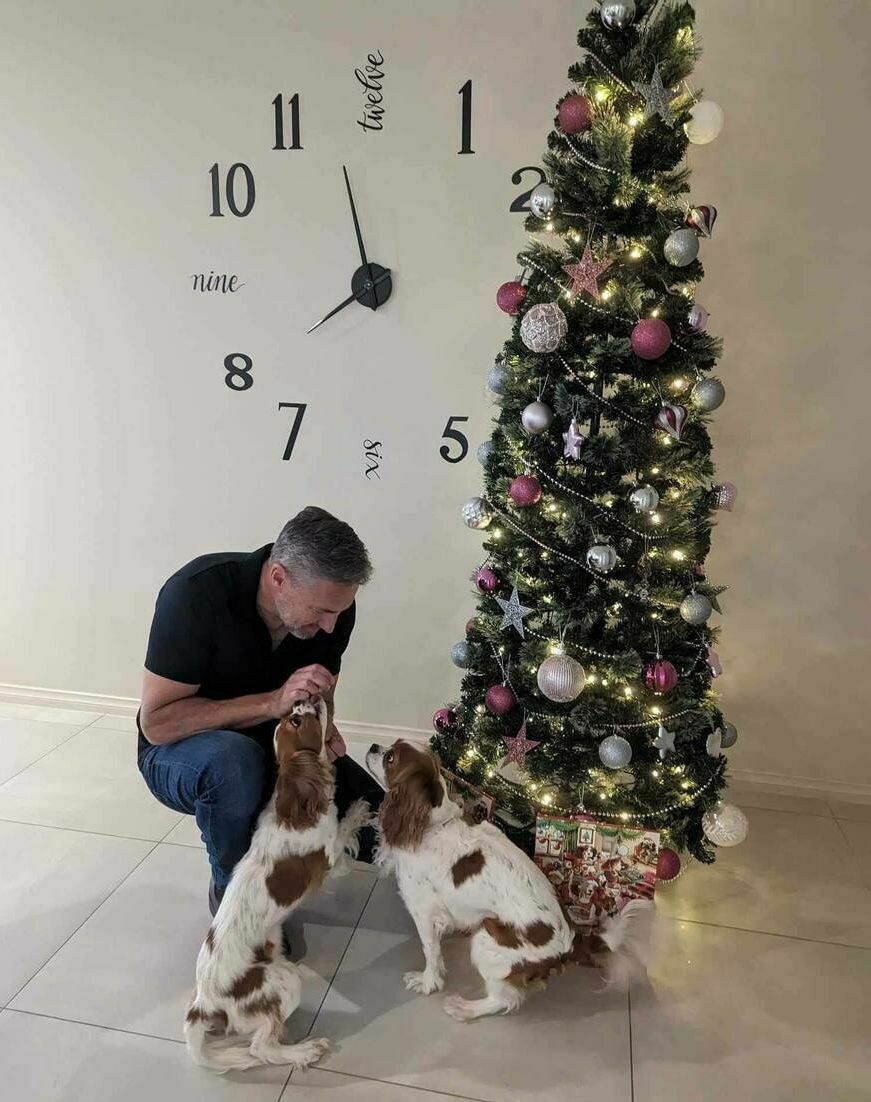 | | Check it twice: which Christmas foods are safe for your pet? | | | If you enjoy including your pet in the Christmas Day festivities, check out this list that our team has compiled of Naughty vs Nice Christmas foods for dogs and cats!
Unless your pet has previously been diagnosed with special dietary requirements, it should be safe to sample foods from the “Nice” list in limited amounts. Just resist the temptation to let them gorge themselves, as they could still end up with an upset tummy due to a sudden dietary change!
Avoid giving your pet access to foods from the “Naughty” list, as these can be harmful or toxic.
“Nice” Christmas foods for pets
- Lean cuts of cooked, boneless salmon fillet
- Lean cuts of cooked turkey, e.g. breast meat (without any stuffing)
- Cooked vegetables such as carrots, peas, green beans, pumpkin, or sweet potato
- Cut cubes of pitted peaches, nectarines, and mangoes, berries such as blueberries and strawberries, and slices of apple, banana, pear, and watermelon
“Naughty” Christmas foods for pets
Very fatty cuts of meat:
Fatty cuts include ham, dark turkey meat, or sausages. These can trigger painful inflammation of the pancreas in some pets.
Cooked bones:
Cooked bones can cause tooth breakages, gut damage, or severe constipation.
Chocolate:
Quantities of chocolate can cause gut upset and potentially fatal seizures or heart problems.
Xylitol-sweetened foods:
Xylitol can cause dangerously low blood sugar and severe liver damage.
Cherries:
Cherry pits and stems are toxic to pets in large quantities.
Whole stone fruits:
Stone fruit pits can cause gut obstruction if swallowed.
Grapes or raisins:
Grapes and raisins can cause potentially fatal kidney damage.
Onions or garlic:
Onions and garlic can both be toxic to pets.
If you have any other questions about safe Christmas treats for your pet, consult our seasonally-savvy team! |
|
|
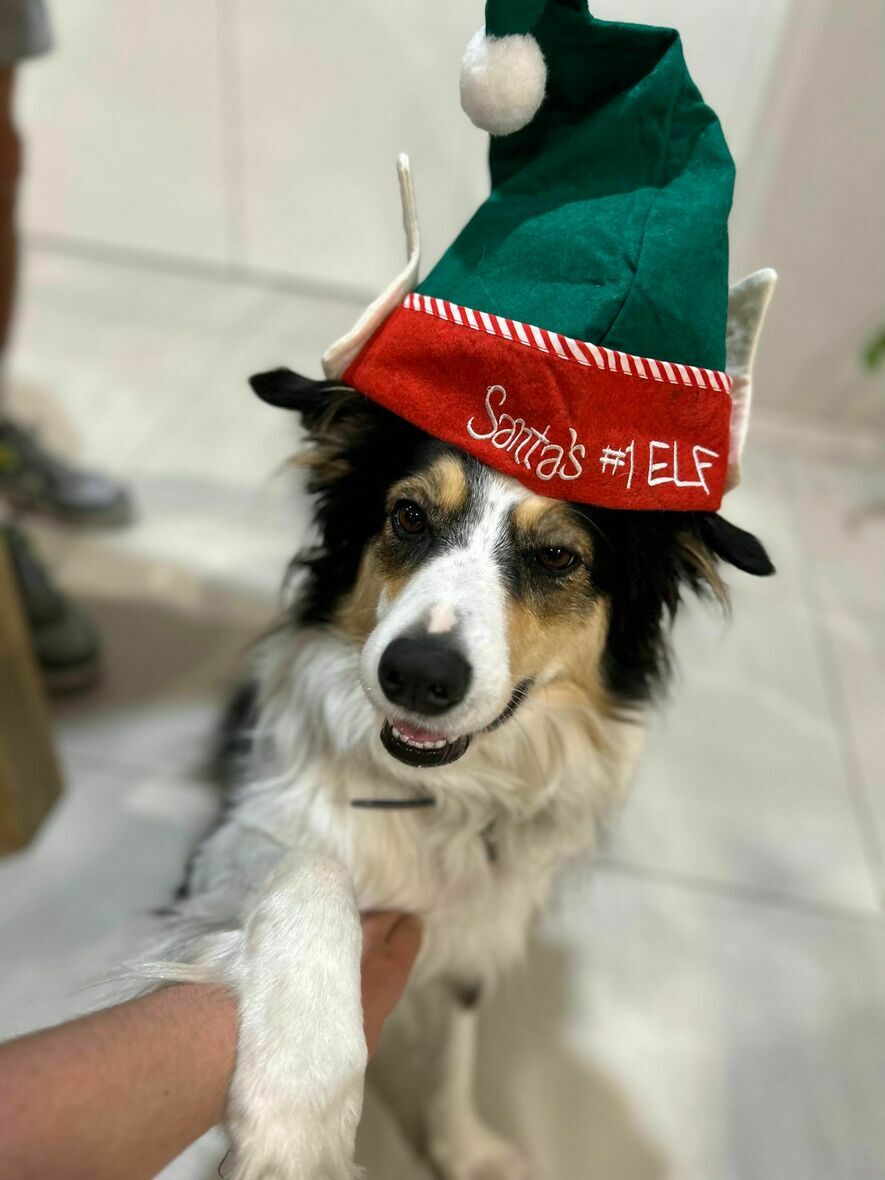 | | Pet friendly Christmas fun 101 | | | What makes the Christmas season better? Why, participating in fun seasonal activities with your pet, of course!
Here are our team’s top ideas for getting into the Christmas spirit with your pet:
Pet presents
There are few things more wholesomely enjoyable than watching your pet get excited about a new toy or treat.
Whilst you can go on a shopping spree for pet-related gifts, you can also save dollars by making your own – here are a few sustainable ideas from the PDSA to get you started.
Playing with wrapping paper and boxes
Never underestimate the fun that your pet can have with a simple cardboard box.
Cats love playing peek-a-boo from inside a cardboard box (particularly if you cut some holes in it and tempt them to pop out intermittently with an enticing dangling toy). Many will also love scrabbling wildly in a box filled with loose wrapping paper.
Dogs will adore a simple treasure box, where you sprinkle some of their favourite treats into a cardboard box filled with scrunched-up paper for them to sniff and dig out.
Watching pet-related films together
Even though the weather outside may not be frightful, it’s still pleasant to curl up on the couch with your pet and enjoy a good movie.
Whilst you can Google lists of the best Christmas-themed movies, you’ll probably feel extra seasonal joy if you find a Christmas film containing pets. Disney’s Lady and the Tramp, anyone?
Seasonal photographs
Photos with Santa have always been a popular way for parents to delight (or unintentionally terrify) their small children. These days, many Santas are willing to take an adorable seasonal photo with your four-legged family member instead.
Extra points if you can share picture of you and your pet doing festive activities on social media - remember to tag us so we can see the fun! |
|
|
 | | A cracker of a Christmas treat | | | Are you looking to spread seasonal cheer to your canine family members?
If your pet doesn’t have any known dietary sensitivities, you can try whipping up these dog-friendly Snowball Pupcakes (devised by the UK Kennel Club). Your pet will think that Christmas has come early!
Ingredients:
1. For the pupcake
- One ripe banana
- 75g natural peanut butter (containing only peanuts +/- a small pinch of salt)
- One egg
- 35g honey
- 50g wholemeal flour
- 35g rolled oats
- 1/2 teaspoon baking powder
- 60ml water
2. For the snowy topping
- One tsp of Greek yoghurt per pupcake
Method:
- Preheat oven to 180 degrees (or 160 degrees Fan-forced)
- Mash the banana in a large bowl
- Mix in the peanut butter, egg and honey
- Add in the dry ingredients (flour, oats and baking powder) and stir until well combined
- Gradually mix in the water
- Divide the mix into 12 mini cupcake cases, and bake for 15-20 minutes or until golden-brown
- Leave to cool
- Remove the pupcakes from their cases
- Top each pupcake with a dollop of Greek yoghurt (or yoghurt smiley faces or paw prints if you’re feeling creative)
- Delight your pet with your culinary creation*
* Even if your pet tolerates most foods, offering new foods in small amounts for a few days is always safest so their gut can adjust gradually. For any pet, a sudden change in diet can trigger gastrointestinal upset, with potential nausea, vomiting, diarrhoea, or very smelly smells.
Therefore, we’d recommend only half a pupcake per day for the first few days for small dogs, and 1-2 pupcakes per day for medium to large dogs.
For more information on safe Christmas foods for your pet, consult our snack-happy team!
Photo credit: thekennelclub.org.uk |
|
|
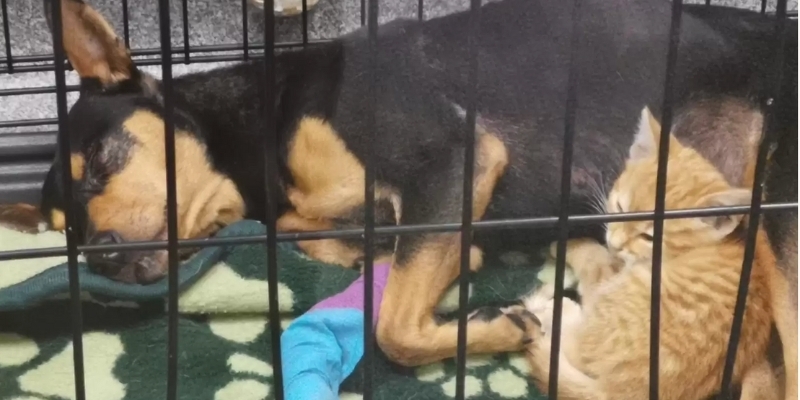 | | Animal News In Brief | | | Ginger Biscuit's sweet friendship with Anne the dog
Ginger Biscuit, a kitten found in a storm drain, and Anne, a weak stray dog, formed an unlikely friendship at Greenside Animal Hospital in Johannesburg, South Africa. Both were placed in the isolation ward for recovery; they initially had separate crates. However, Ginger, known for his adventurous spirit, found a way to cuddle with Anne. Despite concerns, the duo's bond became evident as they comforted each other. Attempts to separate them failed, and now they share a crate full-time. Anne's initial weakness has improved with Ginger's companionship, while Ginger finds solace and safety in Anne. Their unique friendship, described as a case of 'yours, mine, and ours,' has melted hearts at the hospital, showcasing the power of unlikely connections.
Click here to read the full story from The Dodo.
Photo credit: Greenside Animal Hospital
Eye on the prize: vision impaired working dog wins national title
Meet Earl, the amazing half-blind kelpie from Tasmania named the best working dog in Australia and New Zealand. Earl showcased his skills in a three-week competition, running at a speedy 14.1kph, covering 1,300km. Despite being blind in one eye due to a mysterious accident, Earl is an intelligent and affectionate worker on Alex Johns's farm. His GPS-tracked performance surpassed other top working dogs, impressing everyone. Earl's loyalty and hard work stand out as he manages 50,000 sheep and 4,500 cattle on the farm. Even with his weekend snoozes and affectionate moments with the family, Earl proves that an excellent working dog, asking for little but love, is truly priceless.
Click here to watch footage of the full story from ABC.
Rico the cat provides pet therapy to other frightened animals
Once upon a time in Morocco, vet Meryem Imrani rescued a sickly kitten named Rico from the streets. Their bond grew so intense that Rico became the clinic's resident pet. With his big heart, Rico embraced the clinic's mission of helping animals. He comforted nervous patients by licking them and offering reassurance. One day, a tiny orange kitten, much like Rico once was, arrived at the clinic, injured and sick. Despite initial assumptions that he needed to be put down, Imrani and Rico gave him a chance. Rico, understanding the tiny patient's struggle, offered warmth and comfort, playing a crucial role in the kitten's recovery. Rico's kindness has come full circle, as he has repaid the care he received by going above and beyond for another little one in need. In fact, Rico has made a significant difference in Imrani’s life: “I didn’t even try to find him another home,” Imrani said in an online post, “I thank the heavens day and night for allowing me to save him.”
Click here to read the full story from The Dodo. |
|
|
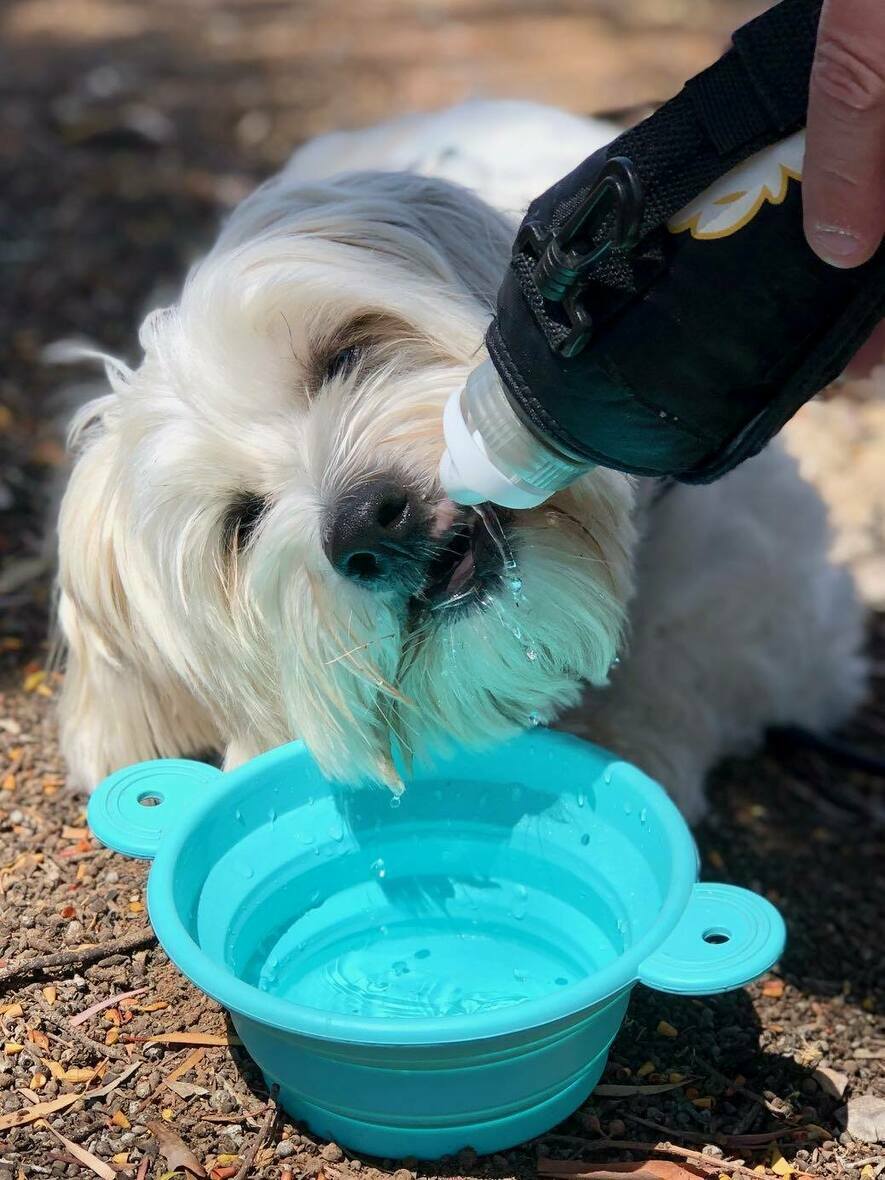 | | Protect pets by keeping them cool and supervised this summer | | | Whilst summertime means fun in the sun for you and your dog, it can also bring some hot weather hazards.
To avoid dampening your sunny season, read on for these tips on keeping your pet safe!
Hot pavement, sad paws
Did you know that on a 25-degree day, pavement temperatures can rise to 52 degrees, whereas on a 35-degree day, they can reach a scorching 65 degrees?
To prevent burns to your pet’s paws, do the “7-second check”, where you place the back of your hand against the pavement for seven seconds. If it’s too hot for you – it’s too hot for your pet to walk on. Instead, try walking your pet only in the early morning or late evening, or stick to natural grassy surfaces.
Swimming safely
Whilst a dip in the pool can be fun and an excellent way for you and your pet to cool down, it’s essential to supervise your pet in the pool as you would a young child.
Train your pet where the pool steps are, and ensure they take a rest break if they start to pant heavily or look tired whilst swimming.
At the end of the swimming session, it’s also a good idea to rinse chlorinated water off them and pat them dry, especially around their ears, to help prevent skin irritation from moist fur.
Keeping cool
If the weather is humid or temperatures exceed 28 degrees, exercising your pet may be unsafe and should be avoided. This advice is especially vital to protect thick-coated breeds, overweight or brachycephalic (flatter-faced) pets, that are more likely to overheat.
Ensure your pet always has access to cool fresh water and shade, and if it’s uncomfortably hot or they’re panting heavily, let them hang out in front of a fan or an air-conditioned room.
For more information on protecting your pet against summer hazards, consult our summer-sensible team! |
|
|
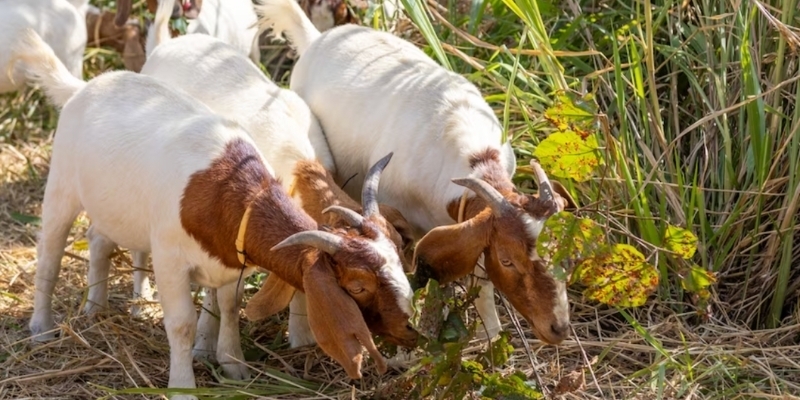 | | Goats: the unlikely superheroes to protect Queenslanders from fire risk | | | A crew of goats has successfully tackled overgrown vegetation near railway lines in Far North Queensland, Australia, finishing the job in just four weeks—well ahead of their eight to 12-week deadline. Queensland Rail (QR) introduced the 15-goat team to manage the fire-risk terrain, which was hard to access and covered in dry grass. QR vegetation manager Glenn Withers praised the goats' efficiency in eliminating environmental weeds and reducing fire hazards. The goats' unique ability to digest the vegetation ensures it won't grow back, allowing for planting less flammable native flora. QR is now considering expanding the use of goats to other sites, including a 20-hectare area in Townsville.
While goats are unsuitable for the entire rail network, their advantages, such as nimbleness and four-stomach anatomy, make them effective in challenging terrains. Norveg, the landscaping contractor, emphasised the goats' role in reducing the need for herbicides and slashing. However, managing goats requires regular welfare checks, inspections, and precautions against predators. University of NSW Professor Angela Moles supported the benefits of goat-managed weeding. Still, she stressed the importance of proper fencing to prevent ecological disturbances. The success of this goat-powered initiative highlights the potential for environmentally friendly solutions to vegetation management challenges.
Click here to read the ABC's full story
Photo credit: Queensland Rail |
|
|
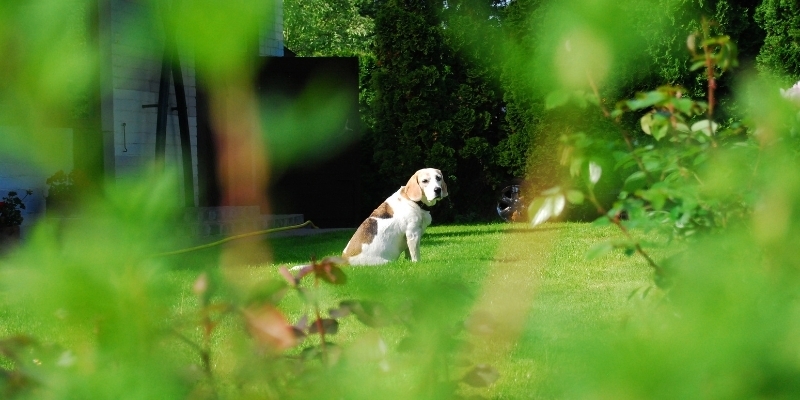 | | What if it’s more than just the shivers? | | | Percy the beagle had squashed his generous frame through a hole in the fence to go on a friendly neighbourhood visit (a.k.a. begging for treats), which wasn't unusual for him.
However, when his owner, Alex, spotted him at the back door an hour later, she quickly realised something wasn't right. Percy looked worried and appeared to be experiencing uncontrollable body twitches.
Immediately, Alex phoned her local veterinary team, who advised her to bring the dog in for immediate assessment.
On physical examination by the vet, Percy showed general muscle tremors and wobbliness. He then vomited up wet soil and some bright blue-green pellets. With suggestive physical symptoms and what looked like snail bait in his vomit, Percy was diagnosed with snail bait toxicity, which can potentially be fatal.
Alex consented immediately to the urgent treatment suggested by the vet, involving a general anaesthetic so that the vet could flush Percy's stomach of any residual snail bait pellets (a procedure known as gastric lavage). The vet would also administer ongoing sedative medications to calm his symptoms and measure quantities of activated charcoal in Percy's gut to help bind up any remaining toxins.
The procedure flushed snail bait pellets and soil out of Percy's stomach. Then, the activated charcoal mixture was administered via a tube down into his stomach. When he slowly recovered from his procedure, Percy's tremors had markedly improved.
With close monitoring in a quiet, calm area of the hospital and ongoing sedative medications, Percy, fortunately, made a full recovery and showed great keenness to eat his next dose of activated charcoal mixed with food.
After the event, Percy's owner determined that Percy had entered a yard further down the street and happily gobbled up some snail bait in a raised vegetable bed. Alex has now repaired the hole in the fence, so naughty Percy can't help himself to "danger snacks" at neighbouring houses again! |
|
|
This email contains comments of a general nature only and is not intended to be a substitute for professional veterinary advice. It should not be relied on as the basis for whether you do or don't do anything.
All content © PetPack 2023 |
|
|
This email was sent to:
email@example.com
Gawler Animal Hospital
76 Adelaide Rd
Gawler South, SA 5118
|
|
|
|